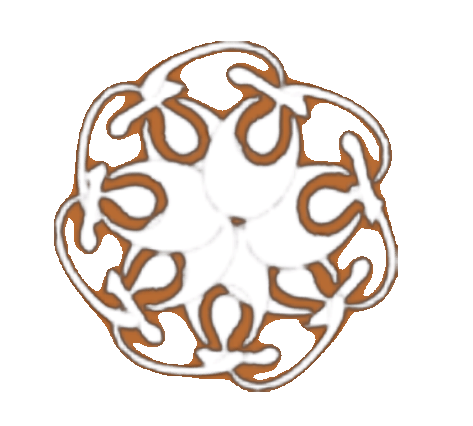Voodoo at the Bayou

Voodoo was introduced to New Orleans by the enslaved West Africans, who merged their religious rituals of nature, spirits, and ancestors practices with those of the local Catholic population. Also known as Voodoo-Catholicism, St. John's Eve is celebrated on the day of the summer solstice in New Orleans each year. Begun in the 1830s by Marie Laveau on Bayou St. John, The celebration is a head-washing ritual combined with a public celebration.


A Veve is a Louisianne Voodoo symbol which acts as a portal for the Iwa or spirit to enter the ceremony during the rituals. Each Iwa has its own unigue Veve and serves as a its representative during the rituals.

"The ceremonies commonly include drumming, chanting, dancing and the drawing of symbols known as veves (vevers). Just as specific colors, objects, chants and drum beats appeal to specific loa, so to do the veves. The veve used in a ceremony is dependent upon the lwa whose presence is desired. Veves are drawn on the ground with cornmeal, sand, or other powdery substances, and they are obliterated during the ritual." Beyer, Catherine. "Vodoun Symbols for Their Gods." Learn Religions, Sep. 20, 2021, learnreligions.com/vodou-veves-4123236


The most famous voodoo queen was Marie Laveau (1794-1881), a legendary healer who is buried in St. Louis Cemetery No.1. As a devout Catholic, Laveau merged her faith with the African rituals to create the modern form practiced today.





